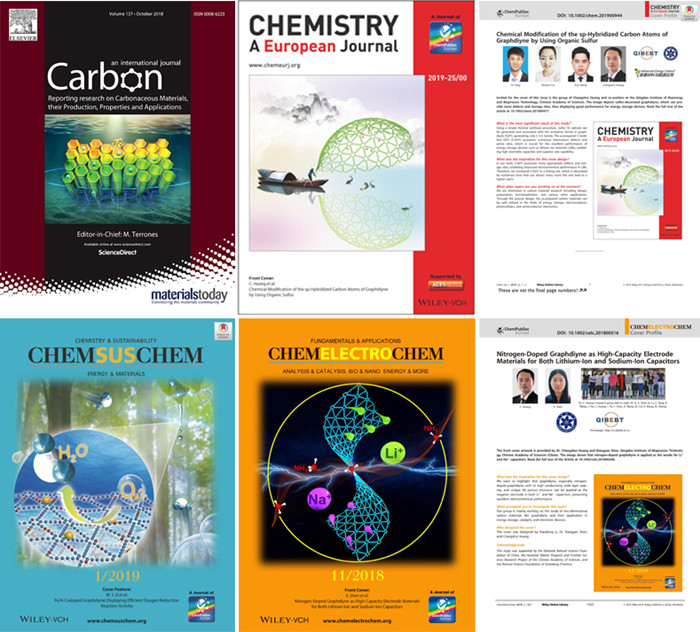Controllable Preparation and Application of New Graphdiyne Materials
With the development of renewable energy, such as wind and solar energy, various critical problems in energy and environment will be gradually improved. However, the solar energy and wind energy also exhibit the disadvantages like instability, discontinuity and uncontrollability, which often cause huge unusable energy. To solve such issues, further development of energy storage and conversion materials for large-scale energy storage is urgent needed.
In recent year, carbon materials, especially two-dimensional carbon materials, such as graphdiyne and graphene, have highly conjugated carbon skeleton, uniformly distributed pore and two-dimensional layered plane characteristics which have attracted extensive attention.
Graphdiyne, which are composed of phenyl rings and alkyne bonds, have larger porous structure and abundant sp-hybridized carbon atoms, which can provide abundant ion channels and catalytic active sites.
The Advanced Carbon for Renewable Energy Group led by Professor Huang Changshui from Qingdao Institute of Bioenergy and Bioprocess Technology (QIBEBT), Chinese Academy of Sciences (CAS), have found that the abundant acetylenic linkers of Graphdiyne, can act as both the active site of reaction and the attachment sites for heteroatoms. They make full use of this characteristic to prepare the heteroatomic (such as iron, nitrogen, sulfur, etc.) doped graphdiyne materials.
The heteroatom doped graphdiyne with much more active sites and catalytic centers, can be used in electrochemical energy storage with better performance. Further application studies show that the doped graphdiyne materials exhibit enhanced electrochemical properties in many applications such as lithium ion batteries, lithium ion capacitors, sodium ion capacitors, and electrocatalysis devices. All these results have an important significance for the development and preparation of novel carbon materials and their energy storage applications.
The research results have been published and selected as the cover images/profiles by the Journal of CARBON, Chem. Eur. J., ChemSusChem and ChemElectroChem ( DOI: 10.1016/j.carbon.2018.05.049, 10.1002/celc.201800300, 10.1002/celc.201800516, 10.1002/cssc.201802170,10.1002/chem.201900477, 10.1002/chem.201900943).
This study was supported by the National Natural Science Foundation of China, the Frontier Science Research Project of CAS, and the Natural Science Foundation of Shandong Province for Distinguished Young Scholars.

Figure. Cover images and cover profiles published recently by a research group on the prestigious journals. (Image by YANG Ze)
(Text by YANG Ze)
Contact :
CHENG Jing
Qingdao Institute of Bioenergy and Bioprocess Technology, Chinese Academy of Sciences
Tel: 86-532-80662647
E-mail: chengjing@qibebt.ac.cn